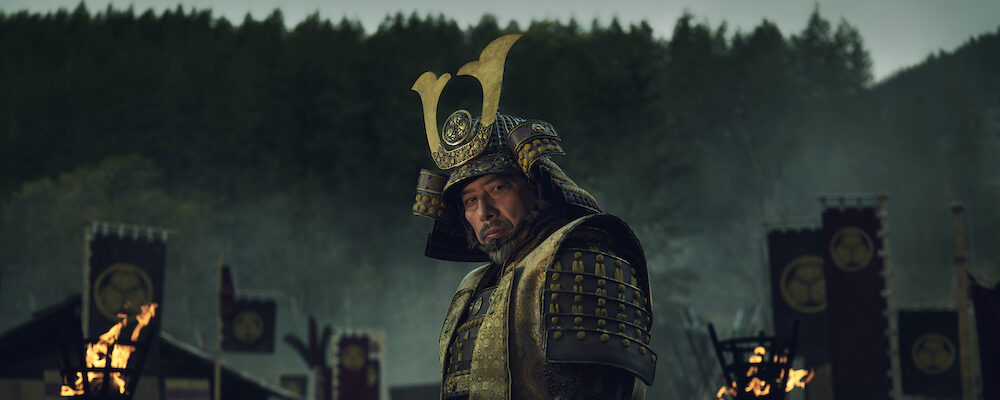FX’s ‘Shōgun’ Is a Gorgeous Vision of War and Romance in Feudal Japan
Alci Rengifo
The term “old-fashioned” isn’t a bad thing when applied to a series like FX’s “Shōgun.” Filmed with the budget and technology of a modern studio, “Shōgun” packs the grandiose feel of a form of epic TV that has been out of fashion. Viewers of a younger generation might not realize it is a revival. James Clavell published his hefty 1,152-page novel of the same name in 1975, when such bestsellers were perfect airplane companions. In 1980, it was adapted into a hit miniseries starring Richard Chamberlain. While this grandiose new take feels fresh, it nods at its predecessor by creating the kind of television that used to be an event. It is big in its look, scale and action-heavy melodrama.
“Shōgun” takes us to feudal Japan in the 1600s. The isolated country trades with the Catholic power of Portugal, who have kept secret the existence of their rival, Protestant England. Onto the island nation arrives, almost by accident, English sailor John Blackthorne (Cosmo Jarvis), who is eager to strike a blow against the Portuguese. He is quickly captured and thrust into a country in political chaos. The reigning shōgun or military ruler has died, leaving a power vacuum. Five regents govern the land in an uneasy truce. Among them is Yoshii Toranaga (Hiroyuki Sanada). His great rival is Ishido Kazunari (Takehiro Hira). Also assessing his moves are Kashigi Yabushige (Tadanobu Asano) and Lady Ochiba (Fumi Nikaido), a former royal consort. Christianity is also beginning to seep into society thanks to Portuguese missionaries. Blackthorne is eventually brought to Toranaga, who seems the more sensible warlord. The Englishman is also aided by Toranaga’s loyal subject, Lady Mariko (Anna Sawai), who speaks Portuguese.
The latter is a rather funny way in which “Shōgun” reverts to old TV norms by having characters say dialogue meant to be Portuguese in English. Either way, creators Justin Marks and Rachel Kondo have crafted this year’s first truly sweeping series. The scale alone makes it worth tuning in, hopefully on a larger television. Just look at the opening scenes where John’s ship emerges through mist or our first views of a Japan from long ago, meticulously brought to life with stunning production design. Comparisons have already been made with series like “Game of Thrones.” But the richness here has nothing to do with fantasy creations, it is instead a rugged saga very much grounded in real history. This is an epic that takes the time to have characters debate the merits of Catholicism and Protestantism, or explain how Spain and Portugal divided up undiscovered lands between themselves, creating a colonial history with vast consequences. The character of Blackthorne was inspired by William Adams, who like Spain’s Gonzalo Guerrero with the Mayans, is one of those rare figures who managed to truly adapt into the new land where he washed ashore.
It is quite impressive how the novel’s archaic politics and character arcs have been condensed into ten episodes. There is a whole scoreboard of rivalries and backstories. Some episodes begin with emotive flashbacks explaining how it is that Toranaga gained his status or why Lady Ochiba seems so coldly bent on settling scores. As Blackthorne learns about the customs and structures of Japan, the writing never takes a white point of view. It strongly establishes how this was already an advanced world that viewed the Europeans as barbarians. Toranaga is shocked to learn the Portuguese have the boldness to secretly build bases essentially surrounding the country. “Shōgun” is then combined with feverish melodrama as Blackthorne gets close to Lady Mariko. The political intrigue is genuinely suspenseful because of all the clashing forces. The regents compete for power but the Portuguese want to get rid of the Englishman threatening to expose and derail their imperialist schemes. The irony becomes that as time passes, Blackthorne is absorbed by Japan, testing his own national loyalties.
How much television has changed since 1980. With many TV series now being as grand as movies, this “Shōgun” can go farther than the original on many production levels. There is now nudity and sex. The violence gets visceral and extreme. Prisoners get boiled alive. An assassin sneaking into a regent’s home will lose their head. Other scenes of thrilling tension don’t have to be bloody, but take their time in putting us on edge when Yabushige accepts the challenge to risk his life by going down a cliff to save a drowning Spaniard. “Shōgun” then builds to the magnificent battle scenes involving warriors on horseback and monstrous cannon fire. In the ‘90s you would get some strong TV mini-epics like “Son of the Morning Star,” but now we get a grand series like this, which could easily play at a multiplex alongside “Dune: Part 2.”
The striking production design and photography could have impressed less had the casting and writing been weak. The scripts keep this epic cohesive and engaging, and the performances wonderfully complete the circle. Cosmo Jarvis is a great, rugged presence with the tone of early Tom Hardy. The real driving force is Hiroyuki Sanada as Toranaga, the regent who seems like the more honest of the power-hungry circle ruling Japan, but can also fall into the traps of having much authority. This is some of his best work, which says something when he has been a longtime screen presence in films such as “The Last Samurai” and “John Wick: Chapter 4.” Anna Sawai is romantic but reserved while Tadanobu Asano as Yabushige is endlessly watchable by being both sly and rugged. “Shōgun” brings all these elements and cast together for a big story that merits returning every week. They don’t make them like this anymore and this series proves maybe it’s time they did.
“Shōgun” premieres Feb. 27 and airs Tuesdays at 10 p.m. ET on FX.

